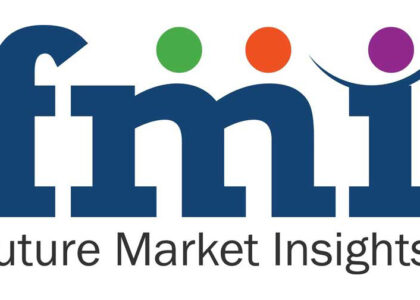During the anticipated period, the market for 3D printed medical devices is anticipated to grow at a strong CAGR of 16.3%. The market is expected to reach a value of US$ 3.6 billion by 2033, up from its current share of US$ 799.8 million in 2023.
[322 Pages Report] Currently heading towards a market value of over US$ 440 Mn, the global market for 3D printed medical devices is projected for stupendous growth at 16% CAGR during 2022- 2029. North America will remain the leading market for 3D printed medical device sales, whereas the market attractiveness of Asia Pacific has been rising notably.
The market growth is primarily assisted by advancements in 3D printing technology, surging government spending in healthcare sector, increasing usage of 3D printed medical devices for medical procedures, and relative simplification of the manufacturing process of 3D printed medical devices. Introduction of Computer-aided Design (CAD) for 3D printing can create trail ready devices, thereby reducing manufacturing time, time to market as well as operational cost.
Get Latest Sample Copy@ https://www.futuremarketinsights.com/reports/sample/rep-gb-1501
Key Takeaways – 3D Printed Medical Devices Market Study
- Although metals and alloys are most preferably used for 3D printed medical devices, biomaterial inks are expected to gain traction during the forecast period owing to their highly biocompatible and versatile physical properties.
- PolyJet – InkJet 3D printing technology currently holds maximum share of 3D printed medical devices market. However, consistent development and adoption of innovative technologies may reduce the 3D printed medical devices market share of this technology during the forecast period.
- Use of 3D printing technology in orthopedic implants is shaping the future of 3D printed medical devices market. It currently accounts for nearly half of the market value.
- The consistently expanding patient pool and growing preference for personalized implants in joint replacement surgeries will remain key boosters to growth of 3D printed medical devices demand in orthopedics.
Asia Pacific has become the global hub of opportunities, and the leaders in 3D printed medical devices landscape have been eying the opportunity here – owing to the massive application scope, remarkably growing patient population, and relatively less manufacturing costs.
Who Is Winning?
Until late 2016, the key focus of most leading players in the 3d printed medical equipment market was geographic expansion through acquisition and merger. In May 2016, Johnson & Johnson announced collaboration with a subsidiary of HP Inc. for manufacturing personalized healthcare solutions at reduced costs through 3D printing techniques. J&J collaborated with Organovo to carry out feasibility study on bio printed human tissue for testing new medications to work with Carbon 3D, famous for ultra-fast Continuous Liquid Interface Production (CLIP) technology for production of custom surgical devices.
The focuse is now gradually shifting towards expansion through strategic partnerships to improve their distribution network. For instance, in 2017, Envision partnered with ScanSource, Inc. to deliver 3D printing solutions to resellers in the Americas. Similarly, in 2018, 3D Systems and Stryker announced distribution partnership for VSP (Virtual Surgical Planning) and anatomical models for carniomaxillofacial specialty.
Get a Tailored Made Report to Match Your requirements, Ask from Market Research Expert – https://www.futuremarketinsights.com/ask-question/rep-gb-1501
Learn More About Report Inclusions
Future market insights offers a unique perspective and actionable insights on 3D printed medical devices market in its latest study, presenting historical demand assessment from 2014 – 2021 and projections from 2022 – 2029 based on application (orthopedic implants, dental implants, carnio-maxillofacial Implant), material type (metals and alloys, biomaterial inks and plastics) technology (stereolithography (SLA) – liquid-based 3D printing, selective layer sintering (SLS) – powder-based 3d printing, digital light processing(DLP), fused deposition modelling (FDM)-plastic filament extrusion-based, polyjet – inkjet 3D printing, electronic beam melting (EBM) ) end user (hospitals, ambulatory surgical centers, diagnostic centers) in seven key regions.
- Orthopaedic Implants
- Dental Implants
- Cranio-maxillofacial Implants
- Internal and External Prostheses
By Technology :
- Stereolithography (SLA) – Liquid Based 3D Printing
- Selective Layer Sintering (SLS) – Powder Based 3D Printing
- Digital Light Processing(DLP)
- Fused Deposition Modeling (FDM): Plastic Filament Extrusion Based
- PolyJet / InkJet 3D Printing
- Electronic Beam Melting (EBM)
For in-depth insights, Download a PDF Brochure – https://www.futuremarketinsights.com/reports/brochure/rep-gb-1501
By Distribution Channel :
- Hospitals
- Ambulatory Surgical Centers
- Diagnostic Centers
By Material :
- Plastics
- Thermoplastics
- Photopolymers
- Biomaterial Inks
- Polymers
- Ceramics
- Hydrogels
- Metals and Alloys
About FMI:
Future Market Insights (ESOMAR certified market research organization and a member of Greater New York Chamber of Commerce) provides in-depth insights into governing factors elevating the demand in the market. It discloses opportunities that will favor the market growth in various segments on the basis of Source, Application, Sales Channel and End Use over the next 10-years.
Contact Us:
Future Market Insights,
Unit No: 1602-006,
Jumeirah Bay 2,
Plot No: JLT-PH2-X2A,
Jumeirah Lakes Towers,
Dubai,
United Arab Emirates
For Sales Enquiries: sales@futuremarketinsights.com
Website: https://www.futuremarketinsights.com
LinkedIn| Twitter| Blogs

